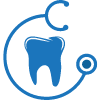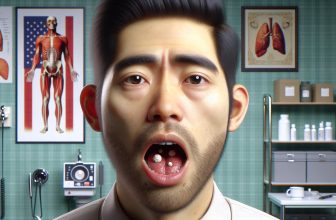
Ever had a toothache that made you question your life choices, only to find out it might be an ear infection playing tricks on you? Yeah, it’s a thing. “Does an ear infection cause tooth pain?” is a question that sounds like a punchline but is more common than you’d think.
I remember the first time I experienced it. I thought I needed a root canal, but my dentist gave me a quizzical look and suggested I see my doctor instead. Turns out, those pesky ear infections can radiate pain to your teeth, making you wonder if your body has a quirky sense of humor. Let’s dive into why this happens and how you can tell the difference between a toothache and an ear infection.
Key Takeaways
- Ear Infections Can Cause Tooth Pain: Ear infections can radiate pain to the teeth due to the interconnected structures in the head.
- Common Symptoms of Ear Infections: Symptoms include ear pain, fever, fullness or pressure in the ear, hearing difficulties, fluid drainage, and dizziness.
- Anatomy Linking Ear and Jaw: The proximity of the temporomandibular joint, the trigeminal nerve, and the Eustachian tube to both the ear and jaw can lead to shared pain.
- Importance of Proper Diagnosis: Comprehensive medical and dental evaluations are crucial to accurately diagnosing the source of pain and providing effective treatment.
- Treatment Approaches: Treatment may involve antibiotics, pain relievers, and corticosteroids for ear infections, along with dental care and jaw pain management approaches.
- Preventive Measures: Maintaining good hygiene and oral health are essential in preventing ear infections and their associated tooth pain.
Understanding Ear Infections
Ear infections can indeed cause tooth pain, making it essential to understand the underlying issues. Recognizing the symptoms and types of ear infections can help identify the source of pain accurately.
Common Symptoms of Ear Infections
Several common symptoms indicate an ear infection. People often experience ear pain, which tends to be sharp and persistent. Fever may accompany the pain, especially in children. Some notice a sense of fullness or pressure in the ear. Hearing difficulties arise in numerous cases, as the infection can block sound transmission. Fluid drainage from the ear signifies a more severe infection. Children might pull or tug at their ears, showing discomfort. Dizziness and balance issues also occur when the inner ear is affected. These signs highlight the need to consult a healthcare professional promptly.
Causes and Types of Ear Infections
Various factors contribute to ear infections. Bacteria and viruses are the primary culprits, often following a respiratory illness. Allergies can inflame the ear tubes, leading to infection. Anatomy plays a role too; children’s shorter and narrower Eustachian tubes make them more prone to infections. There are different types of ear infections. Acute otitis media involves infection in the middle ear and causes pain and fluid buildup. Otitis media with effusion happens when non-infectious fluid accumulates in the middle ear. Otitis externa, or swimmer’s ear, affects the outer ear canal, leading to redness, swelling, and discomfort. Understanding these causes and types aids in seeking appropriate treatment.
Connection Between Ear and Tooth Pain
Ear infections might link to tooth pain through interconnected structures in the head. Recognizing these connections is crucial to properly address the source of discomfort.
Anatomy Linking Ear and Jaw
Several anatomical structures link the ear and jaw, which can explain shared pain experiences. The temporomandibular joint (TMJ) lies close to the ear. Issues with this joint can cause pain that radiates to both the ear and teeth. The trigeminal nerve, which provides sensation to the face, teeth, and jaw, also plays a critical role. When an infection or inflammation affects this nerve near the ear, it can trigger pain that feels like it’s coming from the teeth. Additionally, the Eustachian tube connects the middle ear to the back of the throat, near the jaw. Blockages or pressure changes in this tube during an ear infection might also contribute to dental discomfort.
How Ear Infections Impact Tooth Pain
Ear infections can cause tooth pain through pressure and inflammation. Fluid buildup in the middle ear creates pressure and can lead to discomfort radiating to the jaw and teeth. Swollen tissues might press on the trigeminal nerve, further intensifying pain sensations in the teeth. In severe cases, the pain can become persistent, causing significant discomfort. Acute otitis media, marked by inflammation and fluid in the middle ear, often results in heightened pressure, which can impact nearby dental nerves. Otitis externa, or an outer ear infection, can also cause swelling and might radiate pain towards the teeth. This interconnected pain often makes it challenging for sufferers to pinpoint the exact source, necessitating medical evaluation for accurate diagnosis and treatment.
Diagnosing Ear Infections and Related Tooth Pain
Diagnosing ear infections and related tooth pain involves thorough examination and evaluation. Proper diagnosis ensures the right treatment and alleviates the discomfort effectively.
Medical Examination and Diagnosis
Physicians start by collecting a detailed medical history. They ask questions about symptoms, duration, and intensity. Next, they examine the outer ear and ear canal using an otoscope. They check for redness, swelling, and discharge. Sometimes, they might use a pneumatic otoscope to test eardrum movement, indicating fluid behind it.
If there’s a suspicion of infection in the middle ear, they might order a tympanometry. This test measures eardrum responses to pressure changes, assisting in identifying fluid accumulation or eustachian tube dysfunction. An audiogram might be necessary to assess hearing loss related to the infection.
Blood tests or cultures might follow if severe infection symptoms, like high fever or significant swelling, are present. These tests help determine the infection type—bacterial or viral.
Importance of Dental Evaluation
A dental checkup helps eliminate dental origins of pain. Dentists inspect teeth, gums, and jaw for signs of infection or decay. They might use dental X-rays to identify any hidden issues not visible during a routine examination.
When ear pain radiates to the jaw or teeth, it’s essential to consider temporomandibular joint disorders. Dentists evaluate the jaw’s range of motion and check for clicking or popping sounds. They examine bite alignment to ensure no stress on the joint.
Regular dental cleanings and exams help maintain oral health, possibly preventing conditions that mimic ear pain. If tooth pain persists, dentists might refer patients to specialists for further investigation.
Combining medical and dental evaluations ensures a comprehensive approach, pinpointing the exact cause of pain and guiding effective treatment plans.
Treatment Options for Ear Infection-Induced Tooth Pain
Treating ear infection-induced tooth pain involves addressing both medical and dental aspects to ensure comprehensive relief. Understanding the root cause helps in selecting the most effective treatments.
Medical Treatments for Ear Infections
Antibiotics are often prescribed for bacterial ear infections. They reduce inflammation and eliminate the infection. Pain relievers such as ibuprofen or acetaminophen can help manage pain intensity. Occasionally, doctors recommend corticosteroid ear drops to decrease swelling in the ear canal. Tympanostomy tubes might be necessary for chronic or severe cases to drain fluid and relieve pressure.
Applying a warm compress to the affected ear can soothe pain and inflammation. Additionally, staying hydrated aids in maintaining fluid balance, which can influence ear pressure. Avoiding irritants like cigarette smoke helps prevent worsening symptoms. Regular follow-ups with a healthcare provider ensure the infection is responding to treatment and prevent complications.
Dental Approaches to Alleviate Pain
Addressing the dental aspect involves ruling out primary dental issues. Dentists may recommend using a night guard if temporomandibular joint disorders contribute to the pain. Over-the-counter pain relief options like ibuprofen can be effective in managing dental-related discomfort. Routine dental check-ups help identify and treat cavities or infections that could exacerbate pain.
Applying a saltwater rinse can reduce oral inflammation and ease discomfort. Practicing good oral hygiene helps prevent additional dental problems that could worsen the pain. If the dentist identifies a specific dental issue, appropriate treatments like fillings or root canals are provided. Coordination between dental and medical professionals ensures a holistic approach to managing pain.
Preventive Measures
Tips to Avoid Ear Infections
Proper hygiene keeps ear infections at bay. One effective way is to keep ears dry by using ear plugs when swimming. Avoid inserting objects like cotton swabs in the ear canal since this can push wax further in, leading to infection. It’s crucial to wash hands regularly, especially during cold and flu seasons, as viruses can spread from the hands to the ears.
Vaccinations can help too. The flu vaccine and pneumococcal vaccine reduce the risk of infections that can lead to ear problems. Stay informed about these and keep vaccinations up-to-date.
Addressing allergies can prevent ear infections as well. Dust mites, pollen, and pet dander can trigger allergic reactions, causing ear discomfort. Using antihistamines or decongestants can mitigate symptoms and prevent infections.
Finally, quitting smoking and avoiding secondhand smoke protect ear health. Smoke can irritate the Eustachian tubes and increase the risk of infections. These measures collectively reduce the chances of developing ear infections.
Maintaining Oral Health
Good oral hygiene practices help prevent related tooth pain from ear infections. Brushing twice daily with fluoride toothpaste removes plaque and bacteria that can cause dental issues. Flossing daily reaches areas between teeth that a brush can’t, reducing the risk of decay.
Regular dental check-ups are essential. Visiting a dentist every six months allows for early detection and treatment of potential dental problems. Dentists can identify signs of infection or decay that might contribute to ear pain.
Limit sugary foods and drinks since they contribute to plaque buildup and tooth decay. A balanced diet with plenty of calcium-rich foods strengthens teeth and gums, lowering the risk of dental issues that could lead to pain.
Using a mouthguard at night can help those with temporomandibular joint disorders. This reduces grinding and clenching that might lead to tooth and ear pain. Prioritizing oral health significantly lowers the risk of complications associated with ear infections.
Conclusion
Understanding the link between ear infections and tooth pain can be crucial for effective pain management. By recognizing the shared pathways of pain and taking preventive measures, we can reduce the risk of complications. It’s essential to maintain both ear and oral health through proper hygiene, regular check-ups, and a holistic approach involving dental and medical professionals. Taking these steps can help ensure that we address the root causes of pain and improve overall well-being.
Frequently Asked Questions
What are the common symptoms of ear infections?
Common symptoms of ear infections include ear pain, fever, hearing difficulties, a sense of fullness in the ear, and sometimes fluid drainage from the ear.
What are the different types of ear infections?
The main types of ear infections are acute otitis media, which affects the middle ear, and otitis externa, also known as swimmer’s ear, which affects the outer ear canal.
Can ear infections cause tooth pain?
Yes, ear infections can cause tooth pain due to shared anatomical structures like the temporomandibular joint and the trigeminal nerve, which can lead to referred pain.
How can I prevent ear infections?
Prevent ear infections through proper ear hygiene, vaccinations, managing allergies, and avoiding smoking. Keeping ears dry and clean also helps prevent infections.
How does maintaining oral health help in preventing ear-related tooth pain?
Maintaining good oral hygiene, having regular dental check-ups, making smart dietary choices, and using mouthguards for temporomandibular joint disorders can help prevent tooth pain related to ear infections.
Why is coordination between dental and medical professionals important for managing pain?
Coordination between dental and medical professionals provides a holistic approach, ensuring comprehensive care to effectively manage pain, particularly when symptoms overlap between different areas like ears and teeth.









